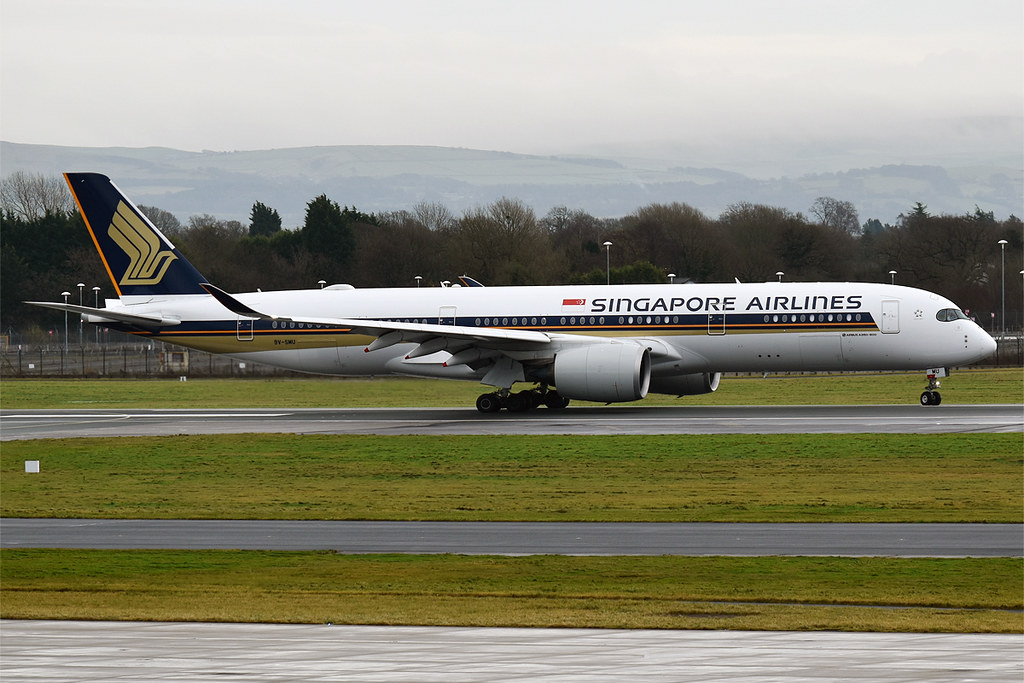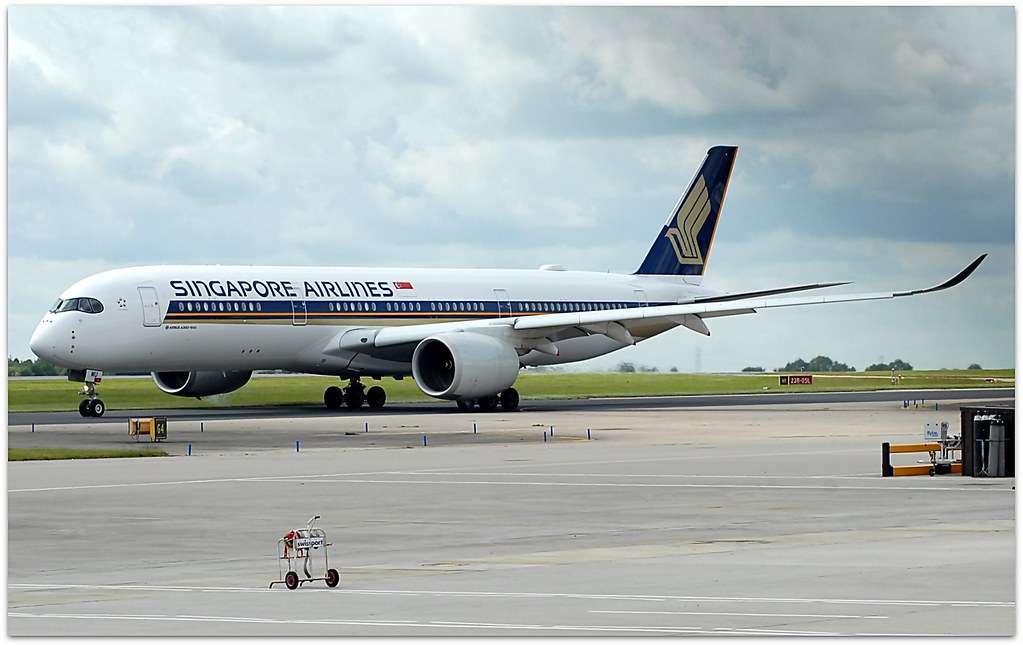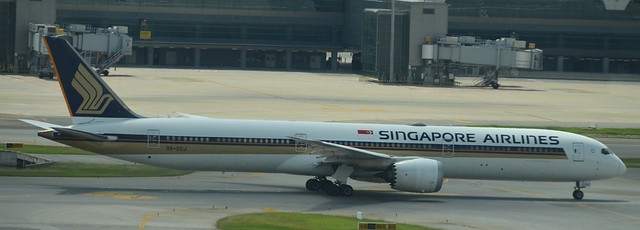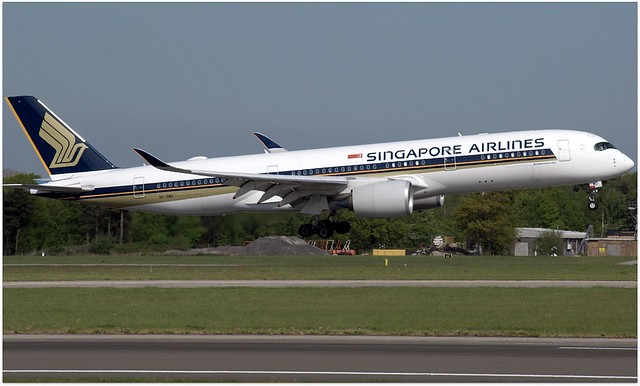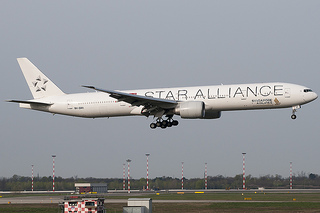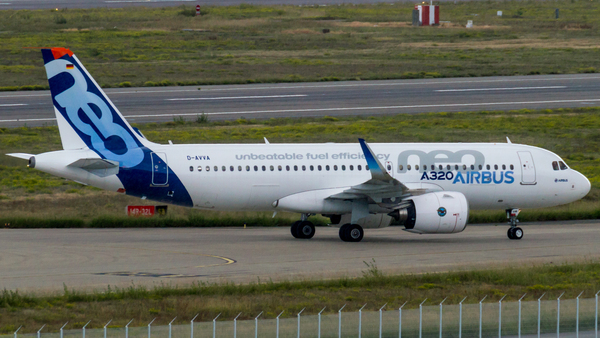Singapore A359 at Barcelona on Oct 24th 2020, takeoff without clearance
Last Update: September 8, 2021 / 18:10:29 GMT/Zulu time
Incident Facts
Date of incident
Oct 24, 2020
Classification
Report
Airline
Singapore Airlines
Flight number
SQ-377
Departure
Barcelona, Spain
Destination
Milan Malpensa, Italy
Aircraft Registration
9V-SMU
Aircraft Type
Airbus A350-900
ICAO Type Designator
A359
On Sep 8th 2021 Singapore's AIB released their final report concluding the probable causes of the incident were:
- The flight crew had believed that they were the only aircraft traffic in the vicinity. The low workload in traffic monitoring due to the low aerodrome traffic could have resulted in some form of reduced alertness by the flight crew.
- The flight crew claimed that they heard a take-off clearance when there had not been one. There was no readback of take-off clearance by the flight crew.
- The flight crew had checked the approach path of Runway 07R and found it to be clear. The PF mentioned checking the surrounding vicinity for approaching aircraft traffic but did not detect the A320 that was approaching Runway 02.
- Although the tower controller had managed the take-off situation appropriately, it would be desirable if the flight crew could have been made aware of other aircraft traffic in the vicinity. The tower controller could have assisted by providing additional information (when issuing the line-up clearance) to the flight crew of the departure aircraft (such as stating the order of the aircraft in the queue with respect to other aircraft traffic), so as to enhance the awareness of the flight crew to the presence of other aircraft.
The SAIB reported the aircraft carried two crews, one for the sector to operate from Barcelona to Milan and the second one for the sector from Milan to Singapore. The first officer to operate out of Barcelona (41, ATPL, 5,066 hours total, 251 hours on type) was pilot flying, the captain to operate out of Barcelona (49, ATPL, 9,807 hours total, 313 hours on type) was pilot monitoring. The senior first officer of the second flight crew to operate out of Milan (48, ATPL, 11,699 hours total, 1,750 hours on type) occupied the observer seat.
The SAIB reported Barcelona was operating runway 07R for departures and runway 02 for arrivals, the approach path to runway 02 crossing runway 07R at low altitude.
The SAIB described the sequence of events:
The aerodrome traffic at the time was low. The flight crew did not see any other aircraft traffic on the ground during their taxiing to the holding point of Runway 07R. The recording of the aerodrome’s ground surface movement radar showed that the A350 was the only aircraft taxiing to Runway 07R at that time.
According to the ATC voice recording and the video recording from the ground surface movement radar, as the A350 was taxiing down Taxiway K to the holding point of Runway 07R, the ground controller instructed the A350’s flight crew to contact the tower controller (on radio frequency 118.105 MHz) when they were ready for departure. The flight crew acknowledged and continued clearing the tasks according to the Before Take-off SOP. They switched to the tower frequency just before reaching the holding point of Runway 07R.
As soon as the flight crew switched to the tower frequency, they were asked by the tower controller if they were ready for departure. The flight crew confirmed that they were, and the tower controller instructed them to “line up and wait”. The flight crew read back “line up and wait”. The flight crew then continued completing the remainder of the tasks on their Before Take-off SOP as they taxied the A350 from the holding point onto Runway 07R to line up.
According to the PF, at the holding point of Runway 07R (the aircraft was then facing the direction of 160 degrees) and prior to entering Runway 07R, he scanned the Navigation Display (ND) and did not see any aircraft on the approach path to Runway 07R or in the vicinity. He then visually scanned the approach path of Runway 07R and the area ahead of his aircraft and did not see any aircraft either. The PM checked that the PF was taxiing correctly for the line-up while the flight crew continued completing their checklist. The PF visually checked that the take-off runway in front of them was clear of traffic.
After the tower controller had issued the “line up and wait” clearance to the A350, he went on to provide instructions to a business jet that had just landed on Runway 02. His plan was to land the next aircraft (an Airbus A320) that was approaching Runway 02 before issuing the take-off clearance to the A350 which he had instructed to wait on Runway 07R.
While the tower controller was still speaking to the business jet that had just landed on Runway 02, he saw the A350 begin a take-off roll on Runway 07R. The tower controller assessed that there was sufficient separation between the A350 and the approaching A320, and that the A350 would be clear of the approach path of Runway 02. Hence, he decided that it was safe to allow the A350 to continue taking off rather than to instruct the A350 to abort the take-off roll.
The tower controller subsequently contacted the A350’s flight crew, after the aircraft was airborne, to inform them that they had not been given take-off clearance and that they were “number two in the sequence” (i.e. the second aircraft in the queue and was to only take off after the approaching A320 had landed). In this incident, the closest separation distance between the A350 and the approaching A320 was about 2.8 nautical miles (NM).
The SAIB analysed:
Situational awareness of flight crew
The A350 flight crew had believed that their flight was the only aircraft traffic in the vicinity because:
1) The aerodrome traffic was low at the time and they did not see any aircraft taxiing or landing while they were taxiing to Runway 07R.
2) They did not hear any radio communication made between the ATC and other aircraft.
If the flight crew had seen the business jet landing or had heard the tower controller communicating to another aircraft over the radio, the flight crew might have been alerted to the presence of other aircraft landing on Runway 02 and might have paid more attention to other approaching traffic to Runway 02.
Due to the low aerodrome traffic, the flight crew were likely having low workload in traffic monitoring. However, it has been known that an individual’s performance and situational awareness may not be optimum in a low workload situation. In this case, the low workload could have resulted in some form of reduced alertness by the flight crew.
Readback by the flight crew
The A350 took off without ATC take-off clearance. The flight crew recalled having received the take-off clearance. However, ATC recording showed that no take-off clearance was issued to the A350. Other than the flight crew’s “line up and wait” readback, there was no other readback by the flight crew. Based on the evidence collected, the investigation team would have to discount their recollection.
The PM and PF were not able to explain how they might have heard a take-off clearance.
Operations involving intersecting runways
Before entering Runway 07R, the flight crew were concerned primarily about checking for traffic on the approach path of Runway 07R. The flight crew mentioned that they had confirmed visually and on the ND that there was no traffic approaching Runway 07R.
For most aerodromes, including those with more than one runway in operation, the flight crew mainly rely on ATC guidance to safely navigate their aircraft around and to ensure safe separation with other aircraft. In addition to ATC’s instructions, the ND could act as an information tool to provide the flight crew with additional awareness on surrounding aircraft traffic.
The flight crew also mentioned that they were aware that Runway 02 was the arrival runway in use. After checking the ND for approaching traffic to Runway 07R, the PF mentioned scanning the ND briefly and looking out ahead to get an awareness of the surrounding aircraft traffic, but he did not notice any traffic.
At the time when the A350 was about to enter Runway 07R, the approaching A320 should have been within range to be shown on the ND. The investigation team is not able to determine if the approaching A320 was visible in the horizon or if the ND had displayed the approaching A320 or whether the PF has seen the A320 displayed on the ND.
ATC’s provision of additional information
After the A350 had taken off, the tower controller informed the flight crew that they were the second aircraft in the queue. This piece of information about being in a queue if provided to the flight crew together with the clearance to line up, would have been useful in alerting the flight crew that their aircraft was in a queue and that they had to wait for further ATC instructions before taking off.
Incident Facts
Date of incident
Oct 24, 2020
Classification
Report
Airline
Singapore Airlines
Flight number
SQ-377
Departure
Barcelona, Spain
Destination
Milan Malpensa, Italy
Aircraft Registration
9V-SMU
Aircraft Type
Airbus A350-900
ICAO Type Designator
A359
This article is published under license from Avherald.com. © of text by Avherald.com.
Article source
You can read 2 more free articles without a subscription.
Subscribe now and continue reading without any limits!
Read unlimited articles and receive our daily update briefing. Gain better insights into what is happening in commercial aviation safety.
Send tip
Support AeroInside by sending a small tip amount.
Related articles
Singapore B78X at Tokyo on Jul 20th 2025, overran runway on landing
A Singapore Airlines Boeing 787-10, registration 9V-SCJ performing flight SQ-638 (sched dep Jul 19th, act Jul 20th) from Singapore (Singapore) to…
Singapore A359 at Shanghai on Jun 27th 2025, turbulence causes injuries
A Singapore Airlines Airbus A350-900, registration 9V-SMB performing flight SQ-832 from Singapore (Singapore) to Shanghai Pudong (China), was…
Singapore B773 near Bangkok on May 21st 2024, severe turbulence kills one and injures 85
A Singapore Airlines Boeing 777-300, registration 9V-SWM performing flight SQ-321 from London Heathrow,EN (UK) to Singapore (Singapore) with 211…
Singapore B773 near Taipei on Oct 27th 2024, cracked windshield
A Singapore Airlines Boeing 777-300, registration 9V-SWI performing flight SQ-636 from Singapore (Singapore) to Tokyo Haneda (Japan) with 249…
Singapore B78X at Tokyo on Aug 12th 2024, white smoke from gear
A Singapore Airlines Boeing 787-10, registration 9V-SCD performing flight SQ-638 (dep Aug 11th) from Singapore (Singapore) to Tokyo Narita (Japan)…
Newest articles
UPS MD11 at Louisville on Nov 4th 2025, burst into flames on takeoff
A UPS United Parcel Service McDonnell Douglas MD-11, registration N259UP performing flight 5X-2976 from Louisville,KY to Honolulu,HI (USA) with 3…
India A20N near Bhopal on Nov 3rd 2025, cargo smoke indication
An Air India Airbus A320-200N, registration VT-EXO performing flight AI-2487 from Delhi to Bangalore (India) with 172 people on board, was enroute at…
Subscribe today
Are you researching aviation incidents? Get access to AeroInside Insights, unlimited read access and receive the daily newsletter.
Pick your plan and subscribePartner

ELITE Simulation Solutions is a leading global provider of Flight Simulation Training Devices, IFR training software as well as flight controls and related services. Find out more.
SafetyScan Pro provides streamlined access to thousands of aviation accident reports. Tailored for your safety management efforts. Book your demo today
AeroInside Blog
Popular aircraft
Airbus A320Boeing 737-800
Boeing 737-800 MAX
Popular airlines
American AirlinesUnited
Delta
Air Canada
Lufthansa
British Airways
